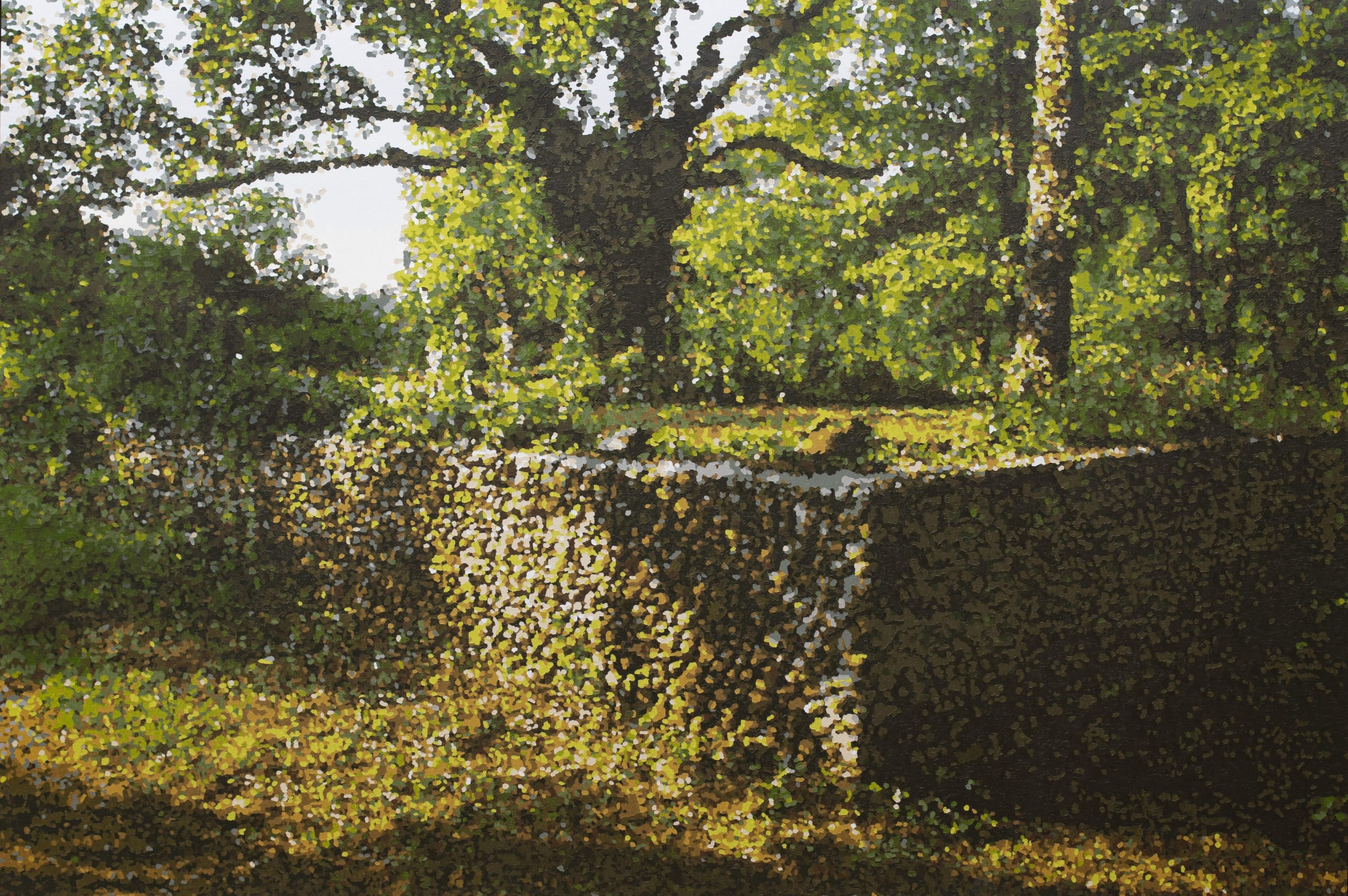Pelham artist Ron Michaud’s “The Vaughn Home,” an oil-on-canvas painting, portrays a landmark on the hike into the former town of Dana, on the Quabbin Reservoir property.
Reminder Publishing submitted photo
In 1938, four Western Massachusetts towns — Dana, Prescott, Greenwich and Enfield — were dissolved to form a source of sustainable drinking water for Greater Boston, the Quabbin Reservoir.
What remains of Dana is the subject of the Westfield Athenaeum’s new exhibit, “The Art of Ron Michaud: The Road to Dana.” The Athenaeum will host a reception with Michaud at 6 p.m. Thursday, Sept. 12, in the Jasper Rand Art Gallery in the Athenaeum at 6 Elm St., Westfield.
“It’s just an interesting human interest story about how these towns that have existed for a long time were just wiped off the face of the map,” said Athenaeum Executive Director Guy McLain.
Between the passing of the Swift Water Act in 1927 and the towns’ disincorporations in 1938, houses and factories belonging to their 2,500 residents were either destroyed or relocated and more than 7,000 bodies from 34 cemeteries were moved elsewhere, according to the state Department of Conservation and Recreation. More than 6,000 bodies are now at Quabbin Park Cemetery in Ware, on land formerly belonging to Enfield.
“All the houses and the buildings are gone,” said McLain, speaking of Dana. “It was once a thriving small town. You can still see traces of the commons.”
Michaud lives in Pelham and was raised in Palmer, not far from the Quabbin Reservoir. When he moved to Amherst for work, he bought a book on hikes around the reservoir, one of which was the road to the site of Dana’s Town Common, which is above the water line but within the reservoir property. It is off State Route 32A in what is now Petersham, and is closed off to cars, guarded by a gate. The road passes by the town’s remains, including stone walls and cellar holes.
“We took this hike and, in the process, it was kind of transformative,” he said. “One can feel as though one was walking into the past.”
Michaud took photographs of the road, which later became “The Road to Dana” series. Six of those paintings are on display at the Athenaeum, as well as some smaller prints. They form a “visual biography,” Michaud said, of a place he described as beautiful and quiet.
The series was a way for him to explore the use of color in art, something Michaud has been fascinated by his whole career. He taught classes on color during his 35 years as a professor, first at Westfield State University, then at the University of Massachusetts Amherst.
Each painting has a limited palette of 16 discreet hues, but how they’re placed, what colors they’re placed next to, and how often they’re used makes it seem like there are many more, he said.
“That says something about how we see, about how the human brain processes visual information,” he said.
He applied paint in such a way that the images look like landscapes from afar, but are pixel-like up close, forcing the viewer to be confronted with the paint or its color.
McLain said the paintings evoke nostalgia for the towns. Landscapes, in general, create a sense of wonder or loss, he said. Their style, which he hopes visitors will find intriguing, gives them a dreamlike quality, he said. Michaud said he understood how they could.
“They’re wistful. They’re evocative. They evoke places that people may feel are familiar, even though they may have never once been,” he said.
Michaud hopes they inspire people to seek out Dana themselves.
“I would like to think that when people see these paintings, that it raises some level of curiosity or inquisitiveness, that they might take the trip over there and walk in and see these places themselves,” he said.
“The Road to Dana” is on display at the Athenaeum’s Jasper Rand Art Gallery until Nov. 15. The Athenaeum is planning to host a gallery talk featuring Michaud; the date has not been finalized.



